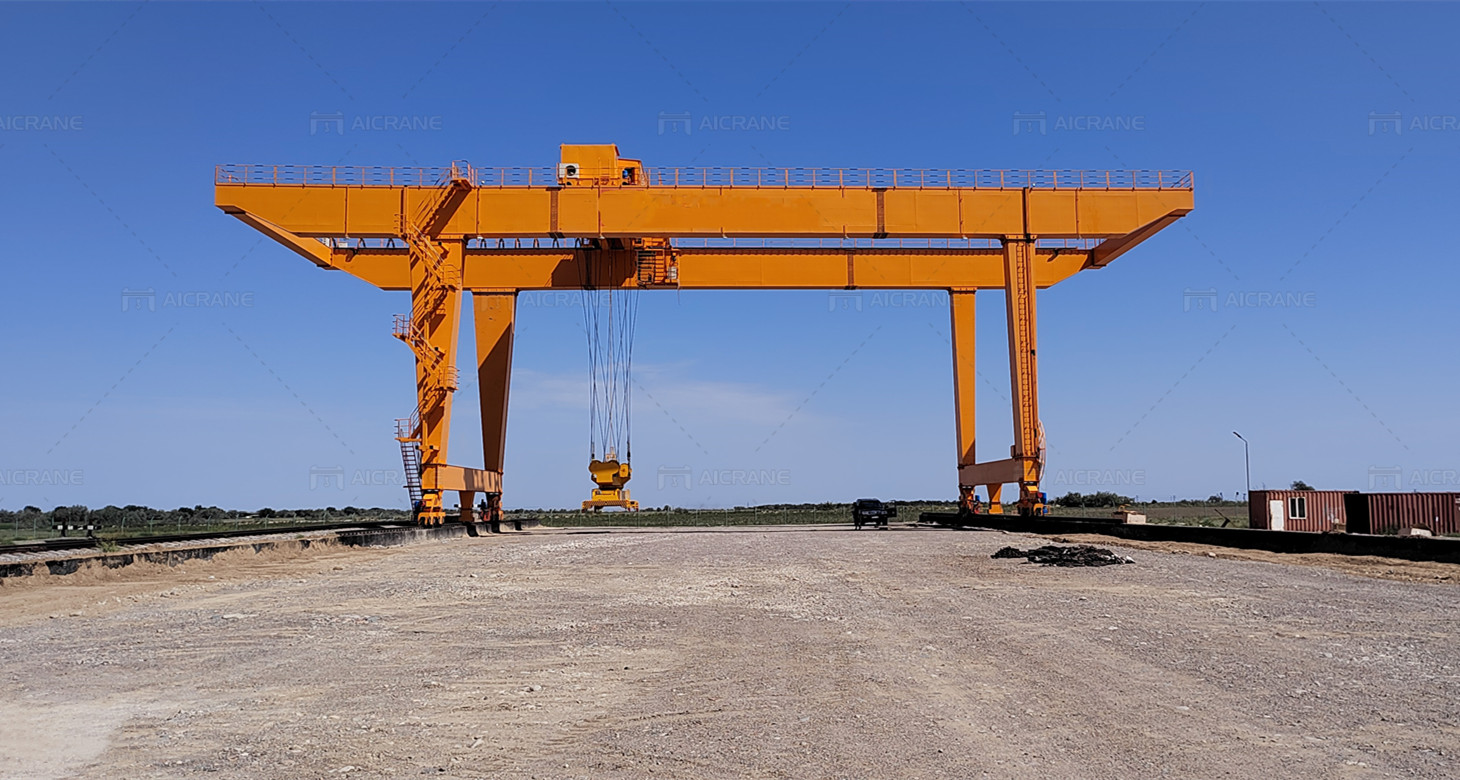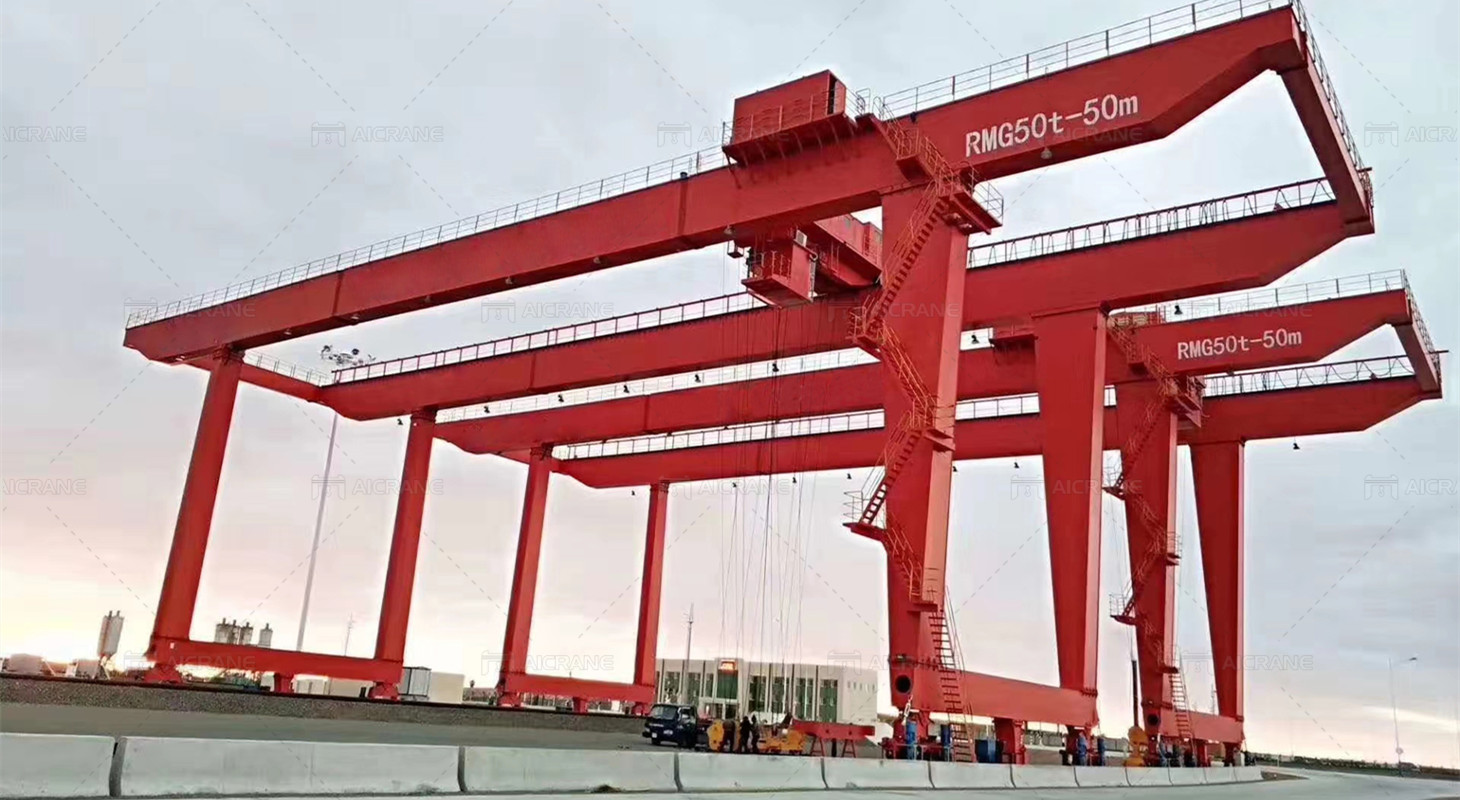Operating a gantry crane for shipping containers is a complex task that requires a high level of skill, precision, and attention to safety protocols. Gantry cranes are essential in ports and container terminals, playing a critical role in the efficient handling and transportation of shipping containers. Proper operation of these cranes ensures not only the safety of the operators but also the integrity of the cargo and equipment. Here are some essential tips for operating a gantry crane shipping container effectively and safely.

Pre-Operation Inspection and Maintenance
Before operating a gantry crane shipping container, a thorough inspection and maintenance check are crucial. This ensures that all parts of the crane are in optimal working condition and reduces the risk of malfunctions during operation.
Check the Crane Structure: Inspect the entire crane structure for any signs of wear and tear, rust, or damage. Pay special attention to critical components such as the main beam, gantry legs, and connections.
Examine the Hoist and Trolley Mechanism: Ensure that the hoist and trolley mechanisms are functioning smoothly. Lubricate all moving parts as per the manufacturer’s recommendations to prevent friction and wear.
Inspect the Wire Ropes and Chains: Wire ropes and chains should be free from kinks, corrosion, and broken strands. Replace any damaged ropes or chains immediately to avoid accidents.
Verify the Control System: Test the control system, including the remote control or cabin controls, for responsiveness and accuracy. Ensure that all safety interlocks and emergency stop functions are operational.
Check the Power Supply: Ensure that the crane’s power supply, whether electric or diesel, is stable and sufficient for the operation. Inspect electrical cables for any signs of wear or damage.
Proper Training and Certification
Operating a gantry crane shipping container requires specialized training and certification. Operators must be well-versed in the specific type of gantry crane they will be using and should understand all relevant safety protocols.
Certified Training Programs: Enroll in a certified training program that covers both theoretical and practical aspects of gantry crane operation. This includes understanding load charts, crane signals, and emergency procedures.
Regular Refresher Courses: Attend regular refresher courses to stay updated with the latest safety standards and operational techniques. This helps in maintaining a high level of competency and awareness.
On-the-Job Training: Gain hands-on experience under the supervision of a certified operator. Practical experience is invaluable in understanding the nuances of operating a gantry crane shipping container.
Load Handling and Safety Protocols
Proper load handling is crucial to the safe and efficient operation of a gantry crane shipping container. Adhering to safety protocols minimizes the risk of accidents and damage to cargo.
Understand Load Charts: Familiarize yourself with the crane’s load charts to understand its lifting capacity at various boom lengths and angles. Never exceed the recommended load limits.
Use Proper Rigging Techniques: Ensure that containers are properly rigged before lifting. Use appropriate lifting gear, such as spreader bars and slings, and ensure they are securely attached to the container’s lifting points.
Maintain a Safe Lifting Speed: Avoid sudden movements and maintain a steady lifting speed. Abrupt starts and stops can cause the load to swing, increasing the risk of accidents.
Monitor Weather Conditions: Be aware of weather conditions, especially high winds, which can affect the stability of the crane and the load. Cease operations if weather conditions become unsafe.

Effective Communication
Clear and effective communication is vital when operating a gantry crane shipping container. All personnel involved in the operation must be able to communicate clearly and understand crane signals.
Use Standard Hand Signals: Ensure that all ground personnel and crane operators are familiar with standard hand signals used in crane operations. This helps in coordinating movements and ensuring safety.
Two-Way Radios: Equip all personnel with two-way radios to facilitate real-time communication. This is especially important in large container yards where visual contact may not always be possible.
Establish Clear Communication Protocols: Set up clear communication protocols for different stages of the operation, such as loading, lifting, and unloading. This helps in coordinating actions and preventing misunderstandings.
Emergency Preparedness
Being prepared for emergencies is an essential part of operating a gantry crane shipping container. Knowing how to respond to emergencies can prevent injuries and minimize damage.
Emergency Stop Procedures: Ensure that all operators know how to activate the emergency stop function on the crane. This should be tested regularly to ensure it is functioning correctly.
Evacuation Plans: Have clear evacuation plans in place in case of emergencies such as fires or structural failures. Conduct regular drills to ensure all personnel know how to respond.
First Aid Training: Provide first aid training to all personnel involved in crane operations. Having trained first aiders on site can make a significant difference in the event of an accident.
Operational Efficiency
Maximizing the efficiency of gantry crane operations not only improves productivity but also enhances safety. Efficient operations reduce the time containers spend in transit, minimizing the risk of accidents.
Plan Lifts in Advance: Plan all lifting operations in advance, considering the load, route, and any potential obstacles. This reduces the likelihood of unexpected issues during the lift.
Use Technology: Utilize modern technology, such as GPS and automated systems, to enhance the precision and efficiency of crane operations. Automated systems can help in positioning containers accurately and reducing human error.
Regular Maintenance: Conduct regular maintenance of the crane to ensure it operates at peak efficiency. This includes routine inspections, lubrication, and replacement of worn parts.
Operating a gantry crane shipping container requires a combination of proper training, meticulous maintenance, and adherence to safety protocols. By understanding and implementing these essential tips from reliable gantry crane manufacturer, operators can ensure safe, efficient, and effective handling of shipping containers in ports and container terminals. Prioritizing safety and efficiency not only protects personnel and equipment but also enhances overall operational productivity, making it a win-win for all stakeholders involved.